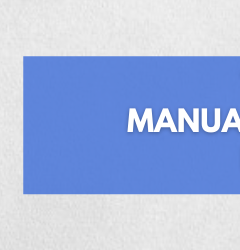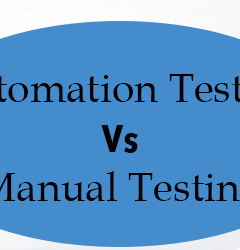24 Nov

Manual testing is important in QA because human interference is required for examining any blemishes or issues experienced in automated testing. Users can just look at the code and contain a component for a test premise basis. For this case, the manual isn’t simply less expensive to execute, it could also deliver fast feedback than an automated test.
The Tester should have the perspective of an end-user and confirm that all the features are working as described in the requirement document. In this cycle, testers implement the test cases and create the reports manually without utilizing any automation tools.
Manual Testing over Automation Testing in the subsequent situations
- At the point when the project is in the beginning development stage.
- When testing UI, particularly their visual viewpoints.
- At the point when exploratory or Adhoc testing should be performed.
- If the project is a short time and writing scripts will be taking time.
- In the event that the test case isn’t automatable. Example captcha.
- It is best for short life cycle products or items.
- Newly planned test cases ought to be executed manually.
- Application/Software must be tested first manually then it is automated.
- It is advised in projects where the requirements change regularly and for products where the GUI changes continually.
- It is less expensive in starting investment compared to Automation testing
- It requires less time and cost to start beneficial manual testing.
- It permits the tester to do Adhoc testing.
- There is no need for the tester to have knowledge or information on Automation Tools
However, we should now take a look at a few purposes behind the significance of manual testing.
- User Perspective
When executing functional testing, it is acceptable to see the application from the end user’s point of view and make a scenario depending on the equivalent.
- UI Stability
At the beginning of the development of the application, UI isn’t steady and habitually changing. In this situation, the manual tester sees these changes and differentiates them correctly, and verifies it effectively.
- Project Duration
If the project period is short, at that point the probability of re-execution of the same arrangement of test cases gets diminished, so it is acceptable to test it manually instead of spending cost, time, and manpower on automation which directly affects the expense of a business.
- Project Cost
If the financial plan is less at that point it is a great idea to invest cost on manual testing rather than automating the cases.
- Change in functionality
If the functionality of the application is changing oftentimes and the set of test cases is obsolete or needed to be refactored. For this situation, Manual testing is the most ideal alternative to pick.
- New User prerequisites
If the new end client requirements are on the guide for quite a while which will change the old functionality and make the test cases obsolete, in that situation people use to prefer manual testing.
- Complex scenario
The complex scenario can’t be taken care of in Automation as bogus positive rates are high for irregular information, so it is acceptable to deal with this Manual testing.
- Scenario required hardware
Some of the applications needed a specific category of hardware to work, so it is very hard or more expensive to deal with through automation, so it is preferable to handle these through manual testing.
Twisa works as a Software Tester at QACraft. She is a Computer Engineer with a degree and she has 7+ years of experience in the QA field(Manual as well as Automation Testing). As an automation tester, she has good knowledge about Automation testing of web-based applications using selenium Webdriver. In her free time, she loves to explore new technologies.
Related Post
Categories
- Agile Testing
- Alpha Testing
- Android App Testing
- API Testing
- Automation Testing
- Banking Domain Testing
- Beta Testing
- cloud testing
- Corporate Life
- cross browser testing
- Cypress Testing
- desktop testing
- Difference
- Domain Testing
- E-commerce Website Testing
- E-learning App Testing
- End-To-End Testing
- Functional Testing
- Game Testing
- Healthcare Domain Testing
- Integration Testing
- Interview Questions
- ios App Testing
- Jenkins
- JIRA
- Katalon
- Manual Testing
- Mobile App Testing
- Monkey Testing
- Non-Functional testing
- Performance Testing
- Postman
- Regression Testing
- Salesforce Testing
- Sanity Testing
- security testing
- Selenium Testing
- Smoke Testing
- Software Testing
- Stability testing
- Static Testing
- Test Case
- Test Environments
- Test Scenario
- Test Script
- TestRigor
- Web Application Testing
© Copyright 2025 QACraft Pvt. Ltd. All rights reserved.
Contact : +91 9157786796




Twisa Mistry